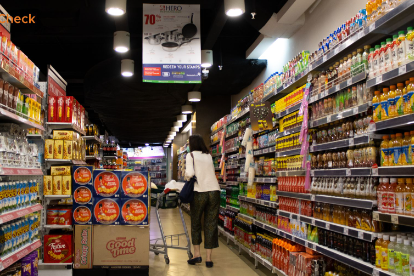From Shelf to Shopper: Designing Eye-Catching Retail Display Boxes

In the competitive world of retail, the battle for consumer attention begins long before a product reaches a shopper’s hands. Amidst the sea of options on store shelves, the packaging of a product plays a pivotal role in catching the eye of potential buyers. Among the various packaging strategies, retail display boxes stand out as a crucial element in influencing purchasing decisions. These boxes do more than just hold products—they serve as silent salespeople, communicating brand values, attracting attention, and ultimately driving sales. In this article, we’ll explore the key principles of designing eye-catching retail display boxes that can turn shelf presence into shopper interest.
1. Understanding the Importance of Retail Display Boxes
Retail display boxes are often positioned in high-traffic areas such as checkout counters or at the ends of aisles, where they are most likely to attract shopper attention. Unlike traditional packaging, which might be stocked among many other products, retail display boxes are designed to stand out, offering a direct opportunity to engage consumers.
These boxes serve multiple purposes:
- Visibility: They elevate the product, making it more visible to shoppers.
- Branding: They reinforce brand identity through design elements like logos, colors, and slogans.
- Convenience: They allow easy access to the product, encouraging impulse purchases.
- Information: They provide crucial information about the product, such as features, benefits, and usage instructions.
Understanding these functions is the first step in designing a retail display box that is not only eye-catching but also effective in driving sales.
2. Prioritizing Visual Appeal
The visual appeal of a retail display box is arguably its most critical aspect. In a crowded retail environment, the box must stand out and catch the shopper’s eye within seconds. Here’s how to achieve that:
- Bold Colors: Use bold, contrasting colors that attract attention. Bright and vibrant colors can make a box more noticeable, but it’s essential to stay true to your brand’s color palette to maintain brand consistency.
- Striking Imagery: High-quality images of the product, along with lifestyle shots showing the product in use, can be highly effective. These images should be sharp, well-lit, and clearly convey the benefits of the product.
- Typography: The text on the box should be clear, legible, and strategically placed. Use large fonts for the product name and key features, ensuring they are readable from a distance. Avoid cluttering the box with too much text; instead, focus on the most important information that will resonate with shoppers.
- Unique Shapes and Designs: Traditional rectangular boxes are common, but experimenting with unique shapes can make a product stand out. For example, a box shaped like the product itself or incorporating a die-cut window can create curiosity and draw shoppers in.
3. Communicating Brand Identity
Your retail display box should be an extension of your brand, effectively communicating who you are and what you stand for. Here are some ways to ensure your box aligns with your brand identity:
- Consistent Branding Elements: Use your brand’s logo, color scheme, and typography consistently across all packaging. This consistency helps reinforce brand recognition and trust.
- Brand Storytelling: Incorporate elements of your brand story into the design. Whether it’s through a tagline, imagery, or a brief description, telling a story can create an emotional connection with the shopper and make your product more memorable.
- Premium Finishes: If your brand is positioned as high-end or luxury, consider using premium finishes such as matte or gloss coatings, foil stamping, or embossing. These finishes not only enhance the look of the box but also convey a sense of quality and sophistication.
4. Designing for Functionality
While aesthetics are crucial, the functionality of the retail display box cannot be overlooked. The box must be designed to protect the product, be easy to assemble, and facilitate a positive customer experience.
- Durability: Choose materials that are sturdy enough to protect the product during shipping and handling but lightweight enough to be cost-effective. Corrugated cardboard is a popular choice for its strength and versatility.
- Ease of Assembly: Retailers appreciate display boxes that are easy to assemble and stock. Consider designing boxes that can be set up quickly without the need for additional tools or complicated instructions.
- Product Accessibility: The design should make it easy for shoppers to access the product. For example, tear-away sections or pop-up displays can make it easier to remove the product from the box, encouraging interaction and purchase.
- Space Efficiency: The size and shape of the box should be optimized to fit well within retail environments. Consider the amount of shelf or counter space available and design the box to maximize its presence without overwhelming the space.
5. Incorporating Eco-Friendly Elements
As consumers become increasingly environmentally conscious, incorporating eco-friendly elements into your retail display box design can be a significant selling point.
- Sustainable Materials: Use recycled or biodegradable materials in your packaging. This not only reduces the environmental impact but also appeals to eco-conscious consumers.
- Minimalist Design: Adopt a minimalist approach that reduces excess packaging and waste. Simple, clean designs that use fewer materials can still be visually appealing while being better for the environment.
- Eco-Friendly Messaging: Clearly communicate the sustainability of your packaging on the box itself. Labels such as “100% Recycled Material” or “Eco-Friendly Packaging” can resonate with consumers who prioritize sustainability in their purchasing decisions.
6. Utilizing Technology for Enhanced Engagement
In the digital age, integrating technology into your retail display boxes can create a more interactive and engaging experience for shoppers.
- QR Codes: Include QR codes on the packaging that shoppers can scan to access additional content, such as product videos, reviews, or special promotions. This not only adds value but also connects the physical product with the digital world.
- Augmented Reality (AR): Some brands are experimenting with AR experiences that can be accessed through smartphones. Shoppers can point their phones at the display box to see interactive content, such as a virtual demonstration of the product or a 3D view.
- Smart Packaging: Incorporate NFC (Near Field Communication) tags that allow customers to tap their phones against the box to unlock exclusive content, offers, or product information.
7. Testing and Iteration
Finally, the design of your retail display box should be tested and refined before it hits the shelves. Consider creating prototypes and conducting focus groups to gather feedback on the design’s effectiveness. Pay attention to how the box performs in a real retail environment, including how well it captures attention, conveys the brand message, and facilitates product interaction.
Based on the feedback, make necessary adjustments to improve the design. Iteration is key to ensuring that your retail display box not only looks good but also performs well in the market.
Read more: Debraca Denise
Conclusion
Designing eye-catching retail display boxes is both an art and a science. It requires a careful balance of aesthetics, functionality, and brand messaging to create a package that stands out on the shelf and drives shopper engagement. By prioritizing visual appeal, communicating your brand identity, ensuring functionality, and incorporating eco-friendly and technological elements, you can create retail display boxes that not only attract attention but also convert that attention into sales. In a competitive retail landscape, your display box can be the deciding factor that turns a casual browser into a loyal customer.




